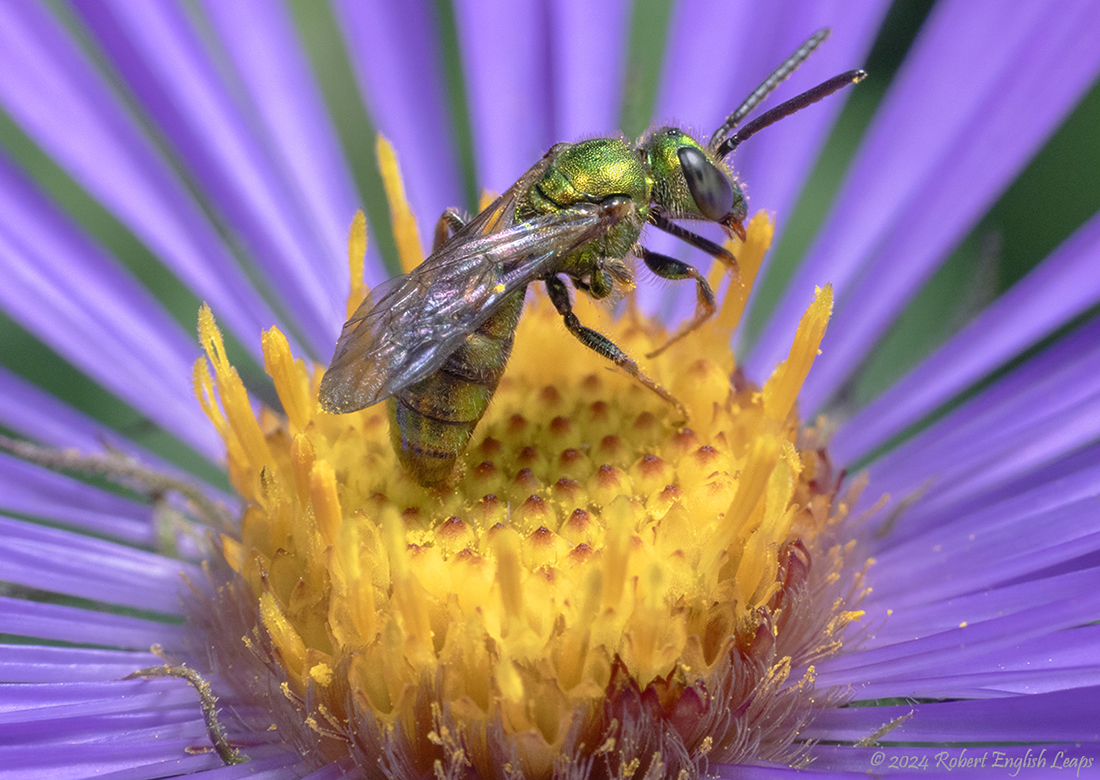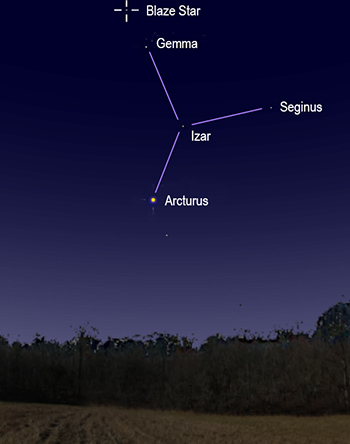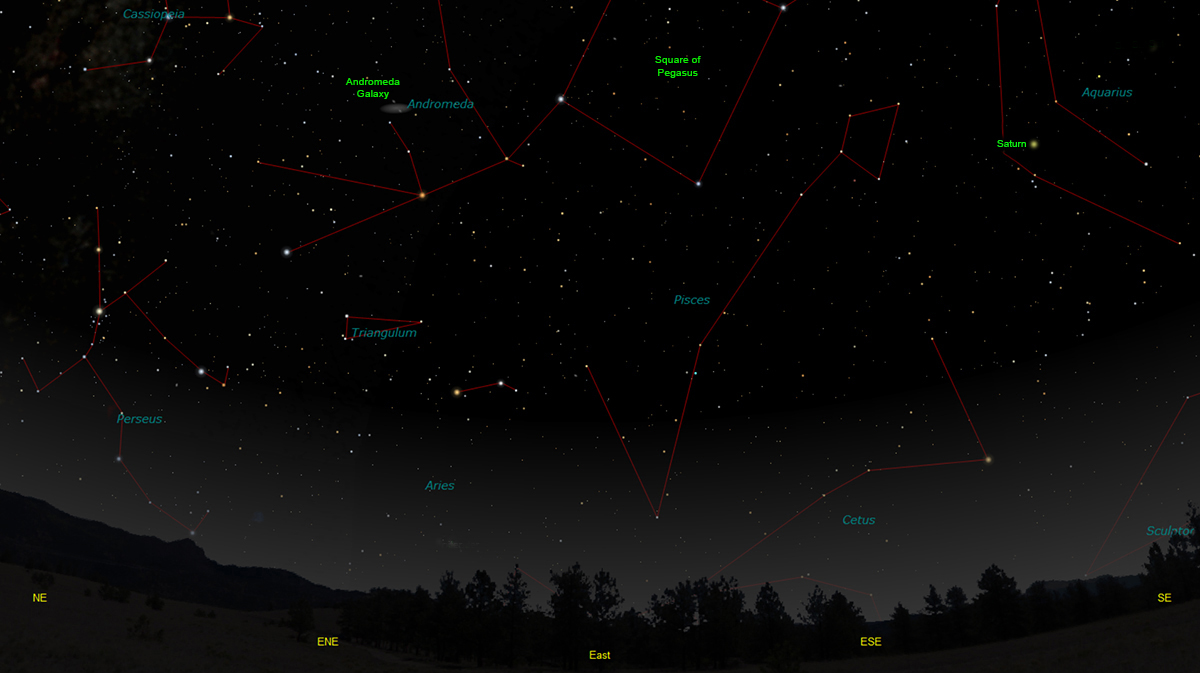The purpose of this feature is to give scout leaders, educators and naturalists an idea of some of the natural events coming up each month. We will try to cover a variety of natural events ranging from sky events to calling periods of amphibians, bird and mammal watching tips, prominent wildflowers and anything else that comes to mind. We will also note prominent constellations appearing over the eastern horizon at mid-evening each month for our area for those who would like to learn the constellations. If you have suggestions for other types of natural information you would like to see added to this calendar, let us know! Though we link book references to nationwide sources, we encourage you to support your local book store whenever possible.
Sky Events for September 2024:
We recommend checking the NASA Space Weather Prediction Center forecast every few days for upcoming auroral displays. Some sources on the internet tend to exaggerate the visibility of these displays, at least at our latitude. To really tell if you have a chance to see them in Tennessee, compare what the NASA Space Weather Prediction Center shows with the image at right. It shows the predicted display for the aurora on May 11th, during the great magnetic storm beginning on May 10th. Comet Tsuchinshan-ATLAS will briefly make an appearance in the morning sky around the end of the month. This comet could possibly brighten enough to reach naked eye visibility. As with all comets, it's impossible to predict exactly how it will behave. For more information and a sky chart, look here. It will be more favorably place in the evening sky in October.
For a more in-depth discussion and star chart look here. For a quick way to "discover" the eruption on your own, you can look at the pattern of the brighter stars in the constellations of Bootes and Corona Borealis. In the image at right notice there is a distinct pattern that is formed by the very bright orange star Arcturus and the three fairly bright stars above it. Arcturus, Izar, Seginus and Gemma form a bright pattern in the shape of a capital "Y". Simply look due west as the skies darken in early September and you should easily be able to pick out bright orange Arcturus, which will be about 30 degrees above the horizon. It is the brightest star in that part of the sky. Next look for the moderately bright stars Izar, Seginus and Gemma. These stars form a pattern in the shape of a capital "Y". If you extend the upper left-hand part of the "Y" about half the distance between Izar and Gemma, you will be at the spot where the blaze star should appear when it erupts. Each segment of the "Y" will be about the width of the fingers of your hand (minus the thumb) held at arm's length. Just get in the habit of checking the "Y" pattern each clear night. If one evening you see a "new" star in the position shown, you'll be among the first to see the star brighten. Since this star is about 2,700 light-years distant, you will be seeing an event that actually occurred 2,700 years ago! The Moon undergoes a partial eclipse on September 17th. Mid-eclipse happens at 10:44 EDT. The umbra barely grazes the northwest limb of the Moon, and only a slight darkening of the limb will occur.
Evening
Sky:
Venus is low in the west after sunset. If you have a flat western horizon, look for it with binoculars about 15 minutes after sunset low in the West-Northwest. It is bright but it is very close to the horizon. On September 4th you can use the same technique to try and spot Venus and a very thin crescent Moon just after sunset. Be sure to let the Sun disappear before searching. You can do serious damage to your eyes if you happen to sweep across the Sun. Jupiter rises about 5 hours after sunset at the beginning of the month in Taurus. Mars is also in Taurus and rises about 30 minutes after Jupiter. It still appears quite small in a telescopic view, only about 6.5 seconds of an arc in diameter. On September 1st, look for it below and to the left of Jupiter facing east. See if you can see the reddish color of Mars. It will be more obvious in binoculars. Morning Sky: Mercury has a great morning apparition in September! On September 1st look for it about 30 minutes before sunrise in the East-Northeast about 9 degrees above the horizon. Look for a razor thin crescent Moon about 4-1/2 degrees to the left and slightly above Mercury. A typical binocular field of view is about 6 degrees, so I recommend binoculars to make both easier to see. On September 6th, the fleet-footed planet will reach its maximum height above the horizon, and on the 8th it will pass about 1/2 degree from the bright star Regulus in Leo. Constellations::
The views below show the sky looking east at 10:15pm EDT on September 8th. The first view shows the sky with the constellations outlined and names depicted. Star and planet names are in green. Constellation names are in blue. The second view shows the same scene without labels. In Andromeda, see if you can pick out the soft oval glow of the Andromeda Galaxy. It's shown on the chart below. If you have a fairly dark sky it should be visible. Don't expect to see any colors or features with the naked eye. If you succeed in spotting it, you'll be seeing an object that's about 2.5 million light-years distant! Small telescopes may allow you to pick out the two brightest satellite galaxies of the Andromeda Galaxy . These are NGC 205 (visible below the galaxy in the image at above) and NGC 221 (visible above and to the left of the core). Your best chance to see them will be when the galaxy is high overhead.
On Learning the Constellations: We advise learning a few constellations each month, and then following them through the seasons. Once you associate a particular constellation coming over the eastern horizon at a certain time of year, you may start thinking about it like an old friend, looking forward to its arrival each season. The stars in the evening scene above, for instance, will always be in the same place relative to the horizon at the same time and date each September. Of course, the planets do move slowly through the constellations, but with practice you will learn to identify them from their appearance. In particular, learn the brightest stars for they will guide you to the fainter stars. Once you can locate the more prominent constellations, you can "branch out" to other constellations around them. It may take you a little while to get a sense of scale, to translate what you see on the computer screen or cell phone to what you see in the sky. Look for patterns, like the stars that make up the "Square of Pegasus." The earth's rotation causes the constellations to appear to move across the sky just as the Sun and the Moon appear to do. If you go outside earlier than the time shown on the charts, the constellations will be lower to the eastern horizon. If you observe later, they will have climbed higher. As each season progresses, the earth's motion around the sun causes the constellations to appear a little farther towards the west each night for any given time of night.As each season progresses, the earth's motion around the Sun causes the constellations to appear a little farther towards the west each night for any given time of night. If you want to see where the constellations in the above figures will be on October 8th at 10:00pm you can stay up till midnight on September 15th and get a preview. The westward motion of the constellations is equivalent to two hours per month. Recommended: Sky & Telescope's Pocket Star Atlas is beautiful, compact star atlas. A good book to learn the constellations is Patterns in the Sky, by Hewitt-White. For sky watching tips, an inexpensive good guide is Secrets of Stargazing, by Becky Ramotowski.
A good general reference book on astronomy is the Peterson
Field Guide,
A Field Guide to the Stars and Planets, by Pasachoff. The book retails for around $14.00.
The Virtual Moon Atlas is a terrific way to learn the surface features of the Moon. And it's free software. You can download the Virtual Moon Atlas here. Apps: The Sky Safari 6 basic version is free and a great aid for the beginning stargazer. We really love the Sky Safari 6 Pro. Both are available for iOS and Android operating systems. There are three versions. The Pro is simply the best astronomy app we've ever seen. The description of the Pro version reads, "includes over 100 million stars, 3 million galaxies down to 18th magnitude, and 750,000 solar system objects; including every comet and asteroid ever discovered." A nother great app is the Photographer's Ephemeris. Great for finding sunrise, moonrise, sunset and moonset times and the precise place on the horizon that the event will occur. Invaluable not only for planning photographs, but also nice to plan an outing to watch the full moon rise. Available for both androids and iOS operating systems.
Amphibians:
At the beginning of September you often hear just a few Green Frogs and Bullfrogs calling. But if cooler weather arrives (we hope) you can pick up several other species. Spring Peepers are also know as "Autumn Pipers" and can be heard calling from patches of woods during the fall. Listen also for the very dry and scratchy version of the Upland Chorus Frog's song on rainy fall evenings. Cooler weather can also bring out choruses of Southern Leopard Frogs. They do occasionally breed in the fall as well. You can locate many species that have been calling more frequently earlier in the year by driving the back roads slowly on rainy nights.
You can sometimes find
the eggs of Marbled Salamanders in wooded wetlands in the fall. Recommended: The Frogs and Toads of North America, Lang Elliott, Houghton Mifflin Co.
Archives (Remember to use the back button on your browser, NOT the back button on the web page!) Natural Calendar February 2024 Natural Calendar December 2023 Natural Calendar November 2023 Natural Calendar September 2023 Natural Calendar February 2023 Natural Calendar September 2022 Natural Calendar February 2022 Natural Calendar December 2021 Natural Calendar November 2021 Natural Calendar September 2021 Natural Calendar February 2021 Natural Calendar December 2020 Natural Calendar November 2020 Natural Calendar September 2020 Natural Calendar February 2020 Natural Calendar December 2019 Natural Calendar November 2019 Natural Calendar September 2019 Natural Calendar February 2019 Natural Calendar December 2018
Natural Calendar September 2018 Natural Calendar February 2018 Natural Calendar December 2017 Natural Calendar November 2017 Natural Calendar October 2017Natural Calendar September 2017 Natural Calendar February 2017 Natural Calendar December 2016 Natural Calendar November 2016 Natural Calendar September 2016Natural Calendar February 2016 Natural Calendar December 2015 Natural Calendar November 2015 Natural Calendar September 2015 Natural Calendar November 2014 Natural Calendar September 2014 Natural Calendar September 2013 Natural Calendar December 2012 Natural Calendar November 2012 Natural Calendar September 2012 Natural Calendar February 2012 Natural Calendar December 2011 Natural Calendar November 2011 Natural Calendar September 2011 Natural Calendar December 2010 Natural Calendar November 2010 Natural Calendar September 2010 Natural Calendar February 2010 Natural Calendar December 2009 Natural Calendar November 2009 Natural Calendar September 2009 Natural Calendar February 2009 Natural Calendar December 2008 Natural Calendar November 2008 Natural Calendar September 2008 Natural Calendar February 2008 Natural Calendar December 2007 Natural Calendar November 2007 Natural Calendar September 2007 Natural Calendar February 2007 Natural Calendar December 2006 Natural Calendar November 2006 Natural Calendar September 2006 Natural Calendar February 2006
Natural Calendar December 2005
Natural Calendar November 2005
Natural Calendar September 2005
Natural Calendar February 2005
Natural Calendar December 2004
Natural Calendar November 2004
Natural Calendar September 2004
Natural Calendar February 2004
Natural Calendar December 2003
Natural Calendar November 2003 Natural Calendar February 2003 Natural Calendar December 2002 Natural Calendar November 2002 Nature Notes Archives: Nature Notes was a page we published in 2001 and 2002 containing our observations about everything from the northern lights display of November 2001 to frog and salamander egg masses. Night scenes prepared with The Sky Professional from Software Bisque All images and recordings © 2024 Leaps
|
|
|







